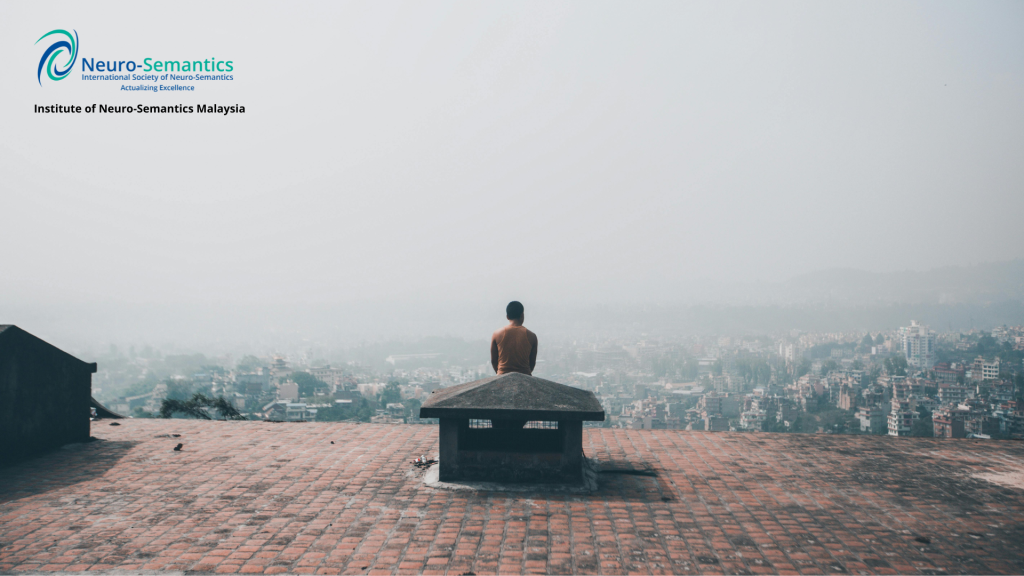
Dr. Michael Hall explains that when people engage in representational thinking, or even in the next higher level—editorial thinking—their process is direct and immediate. This is a primary state of perceiving and thinking. What someone immediately perceives, they track back to the mental “movie” playing in their mind.
This form of thinking is natural, straightforward, and simple. At this level, it is almost impossible to do semantic damage to oneself.
The Next Step: Thinking About Thinking
Once the mind creates that inner movie of what has been seen, heard, or felt, another step follows—drawing a conclusion. One may like or dislike it, judge it as good, bad, valid, or not worth keeping.
Here, self-reflexive consciousness is at work. Hall emphasizes that this ability to “think about one’s thinking” is what makes humans unique. It is both their glory and, at times, their agony.
The Birth of Beliefs
From this second layer of thinking emerge beliefs. A conclusion—any conclusion—forms a belief. These beliefs cover identity (what something is), cause-effect (how it works), value (its significance), history (its origins), purpose (what one should do), and much more.
As Hall stresses, one cannot not believe. The moment people reflect on their primary experiences, they move into meta-thinking and begin constructing an inner world of beliefs. These beliefs define them and determine the quality of their lives.
The Power and Impact of Beliefs
This is why beliefs are so significant. They serve as some of the most influential forces in life. In areas like work, money, relationships, time, health, and even eating habits, beliefs dictate how people experience and act.
Some beliefs empower, energize, and inspire. Others limit, disempower, and create conflict. Hall underscores that everything beyond the primary “movie” is a belief—values, memories, identity, permissions, prohibitions, intentions, and more.
Belief as Epistemology: Your Way of Knowing
Believing, Hall notes, is essentially thinking about experiences. It is how individuals build their personal model of the world—a mental map for navigating life.
Whatever someone believes becomes their epistemology—their way of knowing and understanding. Believing people are inherently bad, or believing success is impossible—these shape the very framework of how one knows what they know.
Self-Fulfilling Loops of Belief
Beliefs operate as self-fulfilling prophecies. And yet, most people get stuck in their beliefs. When trying to step out of limiting thought patterns, they use the same kind of thinking that created the limitation in the first place—leading to loops of stuckness with no apparent escape.
Breaking Free: Re-Thinking Limiting Beliefs
To escape, Hall argues, one must think again. Limiting beliefs need to be re-thought and re-framed into empowering beliefs. This requires claiming self-reflexive consciousness—the ability to deliberately engage in meta-thinking and take charge of one’s mental processes.
The Practice of Meta-Stating
Thinking about thinking is at the core of meta-stating. The practice begins by intentionally stepping back from the movie in one’s mind. Rather than evaluating it, simply witness—see, hear, and feel without judgment.
Then, bring new frames such as acceptance, curiosity, playfulness, learning, and optimism. These higher-level states “meta-state” the original thought, enabling people to re-think it from new perspectives.
Conclusion: Taking Charge of the Mind
Through meta-stating, one can run an ecology check on beliefs and begin taking genuine control of the mind. This, Hall concludes, is what Meta-States and Neuro-Semantics are ultimately about: learning to re-think beliefs, re-frame limitations, and step into empowered ways of knowing and being.
Curated by Danielle Tan.
Reference:
- [Neurons] 2025 Neurons #37 YOUIR BELIEFS/ YOUR EPISTEMOLOGY by L. Michael Hall, Ph.D. Executive Director, ISNS.